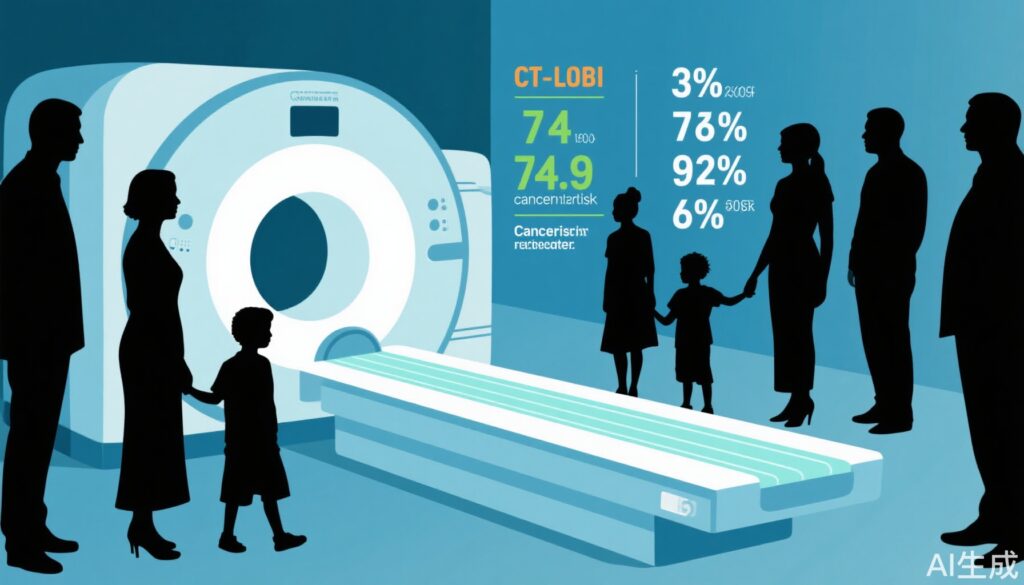Highlights
- Large-scale UCSF-led study estimates nearly 103,000 new U.S. cancer cases annually attributable to CT scan radiation, representing 5% of national incidence.
- Cancer risk is highest for adults aged 50-59 and associated with specific cancer types such as lung, colon, and breast cancer.
- Pediatric risk—though lower in volume—is significant, with thyroid, lung, and breast cancer most affected.
- Overuse and inappropriate indications for CT scans, particularly for low-yield clinical scenarios, remain a concern.
Study Background and Disease Burden
Computed tomography (CT) scanning is an indispensable tool in modern medicine, enabling rapid, high-resolution imaging for diagnosis, staging, and management of diverse diseases. However, CT scans deliver substantially higher doses of ionizing radiation than conventional X-rays, which has long raised concerns about potential carcinogenic effects, especially with increasing scan frequency. Since 2007, U.S. CT utilization has surged by 30%, now accounting for over 93 million scans annually. This escalation underscores an urgent public health issue, as even small individual risks may translate to large population-level impacts.
Study Design
The pivotal study, published in JAMA Internal Medicine (Smith-Bindman et al., 2025), was a retrospective cohort analysis funded by the National Institutes of Health. Researchers analyzed administrative and imaging data from 61.5 million patients, encompassing 93 million CT scans performed in the U.S. in 2023. The study excluded scans conducted in patients’ final year of life to avoid attributing cancer risk to individuals unlikely to experience scan-induced malignancies. Cancer risk projections incorporated age, sex, scan type, and organ-specific radiation sensitivity, referencing established dose-risk models.
Key Findings
The study estimates that CT scan-derived radiation exposure in 2023 alone could result in approximately 103,000 new cancer cases in the U.S., accounting for 5% of all new diagnoses—a figure 3-4 times higher than previous projections. Key findings include:
– Highest projected cancer incidence occurred in adults aged 50-59, with 10,400 cases in women and 9,300 in men.
– In adults, lung, colon, leukemia, bladder, and breast cancers were the most common radiation-related malignancies.
– Among children (who accounted for 4.2% of all scanned), the highest predicted risks were for thyroid, lung, and breast cancer.
– Abdominal/pelvic CT scans posed the greatest carcinogenic burden for adults, while head CT scans were most consequential for pediatric patients.
The analysis also found that scan frequency increased with age, peaking in those aged 60–69. Importantly, the researchers identified a significant subset of scans—such as those performed for upper respiratory infections or non-specific headache—as potentially unnecessary, offering little clinical benefit while exposing patients to avoidable risks.
Expert Commentary
The implications of these findings are profound for clinical practice and health policy. Dr. Rebecca Smith-Bindman, lead author, emphasizes that “while CT scans are invaluable, the sheer scale of their use means even a small individual risk results in a substantial public health burden.” She and co-authors advocate for more judicious imaging, particularly for low-yield indications, and routine adoption of dose-reduction protocols.
Radiology societies and guideline panels have echoed these concerns, highlighting the importance of appropriateness criteria and shared decision-making. Expert consensus supports:
– Limiting CT use to high-value clinical indications.
– Implementing pediatric-specific protocols and alternative imaging (e.g., ultrasound, MRI) where feasible.
– Regularly reviewing and updating institutional imaging protocols to minimize cumulative radiation exposure.
Study limitations include reliance on projected, rather than observed, cancer cases and potential under- or overestimation of latent risks due to evolving dose technologies. Nonetheless, the robust sample size and contemporary data enhance the study’s generalizability.
Conclusion
The UCSF-led analysis underscores that medical imaging is a double-edged sword: life-saving when appropriately applied, but not without risk. CT-related radiation may contribute to a significant fraction of new U.S. cancer cases annually. To mitigate this, clinicians must rigorously evaluate the necessity of each scan, prioritize dose minimization, and foster patient-clinician dialogue around imaging choices. Future research should focus on real-world outcomes, technological innovations in dose reduction, and system-level interventions to curb unnecessary imaging.
References
Smith-Bindman R, Chu PW, Azman Firdaus H, Stewart C, Malekhedayat M, Alber S, Bolch WE, Mahendra M, Berrington de González A, Miglioretti DL. Projected Lifetime Cancer Risks From Current Computed Tomography Imaging. JAMA Intern Med. 2025 Jun 1;185(6):710-719. doi: 10.1001/jamainternmed.2025.0505. Erratum in: JAMA Intern Med. 2025 Jun 1;185(6):747. doi: 10.1001/jamainternmed.2025.2355. PMID: 40227719; PMCID: PMC11997853.



